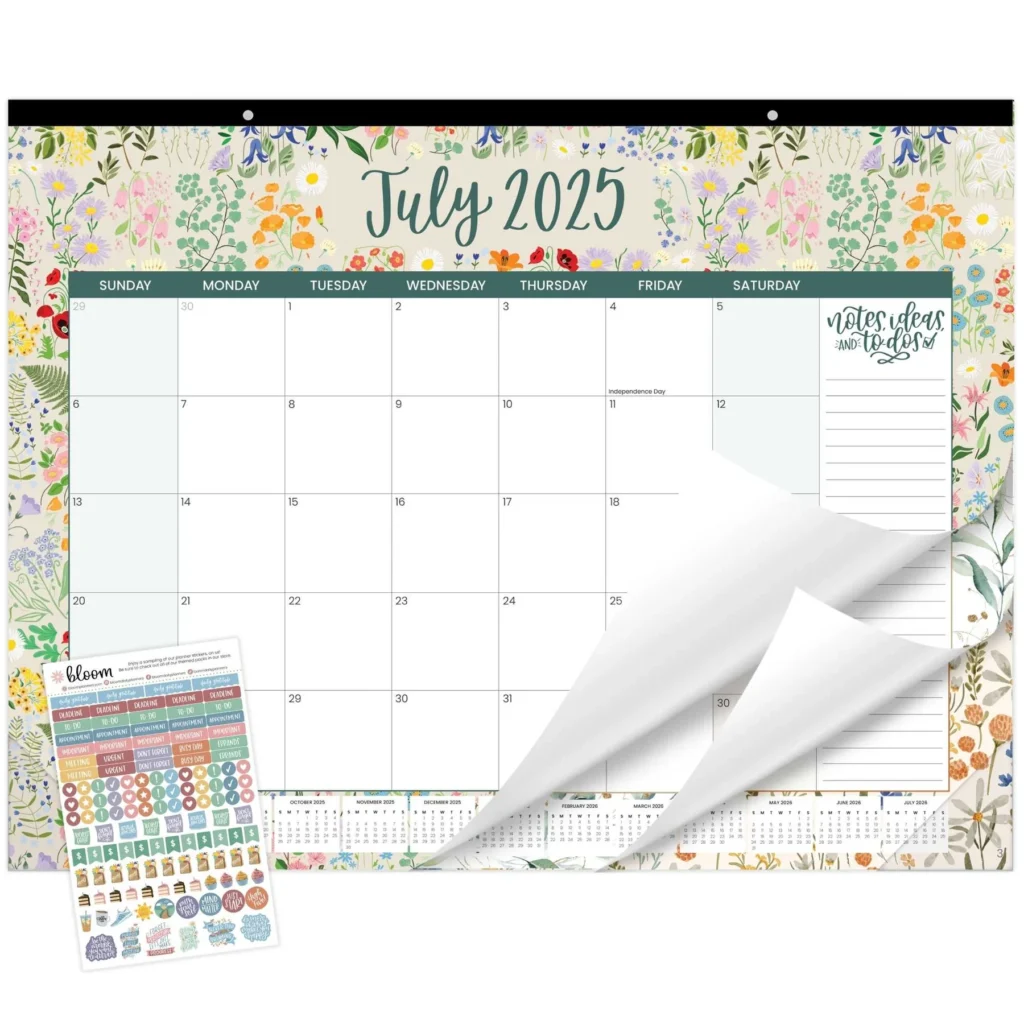Dinner can feel like a chore after a long day. You want a meal that’s quick, healthy, and easy to put together. But without a plan, you might end up ordering takeout or throwing together whatever is left in the fridge. That’s where a weekly meal planner helps. It keeps meals organized, reduces stress, and saves time in the kitchen.
Small changes, like cooking in batches or prepping ingredients, can make dinner simple. A little structure turns meal planning into a habit rather than a task. Tools like meal planning stickers make the process fun and easy to track.
Why a Weekly Meal Planner Makes Dinners Easier
Cooking every night can feel like a lot. Deciding what to make takes time. Grocery shopping without a plan leads to random items that don’t work well together. A weekly meal planner solves these problems.
When meals are planned, you spend less time thinking about what to cook. You know what ingredients you need and how to use them. This avoids last-minute food runs. A plan also prevents food waste since you buy only what you need.
Meal planning helps with nutrition too. It balances proteins, carbs, and vegetables, so you don’t rely on processed foods. It also makes dinner prep faster because the guesswork is gone.
Batch Cooking: A Time-Saving Strategy
Cooking from scratch every night takes time. Batch cooking helps by preparing meals in advance. This method works well for busy schedules.
You can batch-cook proteins, grains, and vegetables at the start of the week. Cook a large portion of chicken, tofu, or beans. Store them in the fridge and use them in different meals. A pot of quinoa or rice can work for several dinners. Roasted vegetables last for days and can be added to salads, stir-fries, or pasta.
Soup is another great option. Make a big batch, store it in portions, and reheat when needed. Freezing meals helps too. You can freeze extra portions and take them out on busy nights.
To keep track of prepped food, label containers. Meal planning stickers make it easier to note dates and ingredients. This helps you see what’s ready to use.
Prepping Ingredients in Advance for Faster Cooking
Prepping ahead saves time. Cutting vegetables, marinating proteins, or portioning snacks makes dinner stress-free.
Chop onions, peppers, or carrots in advance. Store them in airtight containers. When it’s time to cook, everything is ready to go. You can also pre-cook proteins like grilled chicken, baked tofu, or ground turkey. Having these on hand means you can put together a meal in minutes.
Grains take time to cook, so making them ahead helps. Quinoa, rice, or pasta stays fresh in the fridge for days. Tossing them into meals takes no effort. Prepping sauces or dressings saves time too. A homemade sauce stored in a jar makes quick meals easier. You can mix it into stir-fries, salads, or grain bowls.
Use meal planning stickers to label containers. Mark which items need to be used first so nothing goes to waste.
Smart Grocery Shopping for Quick Dinners
A shopping list based on planned meals makes grocery trips faster. You know what to purchase and avoid impulse purchases. Group items by sections. Fresh produce, dairy, pantry staples, and proteins should be listed together. This saves time in the store.
Buying versatile ingredients helps. Bell peppers work in stir-fries, fajitas, and salads. Eggs can be consumed for breakfast, lunch, or dinner. A single block of tofu can be grilled, scrambled, or tossed into soups.
A weekly meal planner helps track what’s already at home. This avoids buying duplicates. It also helps stick to a budget by cutting down on waste.
Quick and Nutritious Meal Ideas
Healthy meals don’t have to be hard. A simple formula makes planning easier: protein + grain + vegetable + sauce.
- Sheet-pan meals are quick. Roast chicken, sweet potatoes, and broccoli together. Add seasoning, bake, and dinner is done.
- Stir-fries use up pre-cut vegetables. Toss them in a pan with tofu or shrimp. Add a sauce, and serve over rice.
- One-pot meals reduce cleanup. Cook everything in a single pot for less mess. Soups, stews, or pasta dishes work well.
- Salads come together fast with prepped ingredients. Keep washed greens, roasted veggies, and cooked grains in the fridge. Mix and match for variety.
- Wraps or grain bowls use leftovers. Combine proteins, grains, and vegetables for a quick meal. Add a sauce or dressing for extra flavor.
Making Meal Planning Fun and Sustainable
Sticking to a plan feels easier when it’s enjoyable. Involve the whole family in choosing meals. Kids can pick a meal for the week. Partners can help prep or cook.
Meal planning stickers keep things organized. They make it easy to mark themed nights, track leftovers, or highlight favorite meals. A visual plan makes the process simple.
Keep a list of go-to meals. When planning, you won’t have to start from scratch. Rotate meals each week to keep things fresh. Meal plans should be flexible. If something doesn’t work, adjust it. The goal is to make dinner stress-free, not rigid.
Conclusion
A weekly meal planner turns dinner from a hassle into a habit. Planning meals ahead means less stress, faster prep, and fewer last-minute food runs.
Batch cooking, ingredient prep, and smart grocery shopping make meals easier. Quick recipes help you stick to healthy eating without spending hours in the kitchen. Meal planning stickers add fun and help with organization. They make it easier to track meals, prep work, and food storage.
Planning ahead keeps dinner simple. A little effort saves time, money, and stress all week long.



